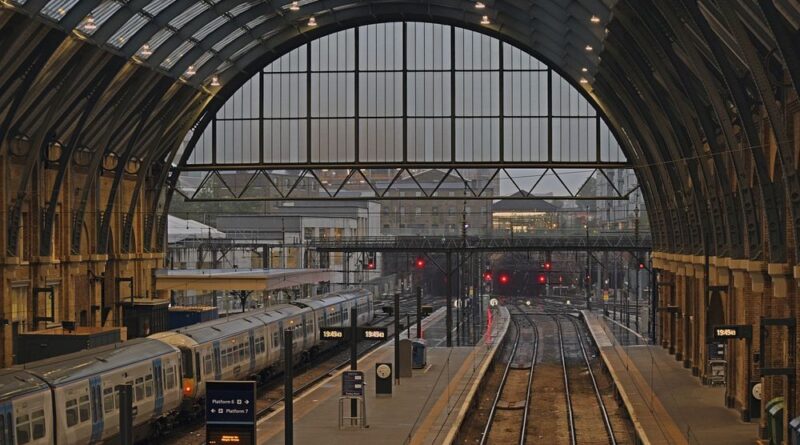Redevelopment of Indian Railway Stations
Introduction
On August 6, Prime Minister Narendra Modi marked a historic moment for Indian Railways as he laid the foundation stone for the redevelopment of 508 railway stations across the country via video conferencing. These 508 stations are spread across 27 states and union territories, with Uttar Pradesh and Rajasthan each hosting 55, followed by 49 in Bihar, 44 in Maharashtra, 37 in West Bengal, and many more. This monumental undertaking is part of the Amrit Bharat Station Scheme, an ongoing mission launched in February 2023 by the Ministry of Railways. It aims to redevelop a total of 1309 stations nationwide, transforming them into modern, state-of-the-art facilities, catering to the needs of millions of passengers. This blog will investigate the details of this transformative initiative, highlighting its goals, challenges, and future prospects.
Amrit Bharat Station Scheme
The Amrit Bharat Station Scheme is set to revamp a total of 1309 railway stations across India. This redevelopment is not merely cosmetic; it will introduce modern passenger amenities while ensuring well-designed traffic circulation, inter-modal integration, and clear signage for passenger guidance. The scheme also prioritizes eco-friendly practices by incorporating solar power generation, rainwater harvesting systems, and efficient waste management solutions, thereby reducing the environmental footprint of these upgraded stations. Notably, Amrit Bharat Stations will feature dedicated staff trained to assist passengers in various ways, making journeys hassle-free. Modern amenities, such as free Wi-Fi access, will keep passengers connected throughout their travels. The total cost for redeveloping these stations is an impressive ₹24,470 crores, with phase one of the Amrit Bharat Station Scheme receiving a sanctioned cost of ₹934 crores.
Challenges for Indian Railways
The Indian Railways network faces several challenges that need addressing. The acquisition of land for railway projects can be a tedious and time-consuming process, involving negotiations with landowners, legal and regulatory hurdles, and ensuring fair compensation for affected individuals. Streamlining this process is crucial.
The financial sustainability of Indian Railways is another concern. Expanding and upgrading the railway network, introducing new technologies, and maintaining infrastructure require substantial investments. Ensuring a robust revenue generation model and exploring innovative financing mechanisms are essential.
Public-Private Partnership (PPP) projects have faced issues, including contract disputes, capital availability, and regulatory hurdles related to land acquisition. Modernizing the ageing infrastructure is necessary to meet the growing demand for transportation. According to the Indian Institute of Management Ahmedabad, around ₹50 lakh crores ($676 billion) must be invested in the next 30 years to upgrade the infrastructure.

Future Plans for Indian Railways
Indian Railways has set ambitious targets, aiming to become a Net Zero carbon emitter by 2030. This entails replacing the existing railway system with “green railways” and achieving net zero carbon emissions. The development of automatic electronic block signalling systems, 100% electrification, and higher speeds are on the agenda. Additionally, plans include a high-speed rail network interconnecting major cities, dedicated freight corridors, and introducing 800 semi-high-speed Vande Bharat train sets by 2030. These initiatives mark a significant leap in the modernization of India’s transportation infrastructure, promising energy-efficient and eco-friendly travel experiences.
Steps Taken by the Indian Railway Government After Redevelopment
The Ministry of Railways has launched a scheme to modernize over 1,000 small stations in the coming years, with provisions for rooftop plazas, longer platforms, ballast-less tracks, and 5G connectivity. These upgraded stations will create a new atmosphere for development, attracting visitors, increasing tourism, and boosting economic activities in nearby areas.
The ‘One Station One Product’ scheme aims to support artisans and brand districts. Initiatives like ‘Kisan Rail’ improve the freight business, transporting more than 49,000 tonnes of commodities on eight routes. The ‘KAVACH’ system enhances safety, while ‘Mission Raftaar’ seeks to double the average speed of freight trains and increase the speed of superfast/mail/express trains by 25 kmph.
Conclusion
Prime Minister Narendra Modi’s visionary step toward redeveloping 508 railway stations heralds a new era for Indian Railways. The Amrit Bharat Station Scheme, with its modernity and sustainability focus, will revitalize the country’s rail infrastructure, elevating travel experiences for millions of passengers. This transformative project reflects India’s vision of a developed and progressive nation, where heritage and modernity coexist harmoniously. Station redevelopment is poised to drive India’s growth, foster unity, and strengthen the country’s global standing.
For more such interesting blogs click https://vichaardhara.co.in/index.php/category/uncategorised/


